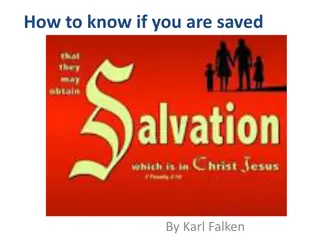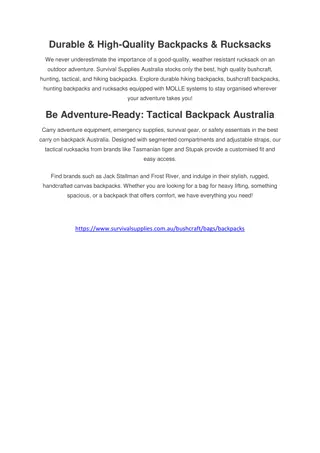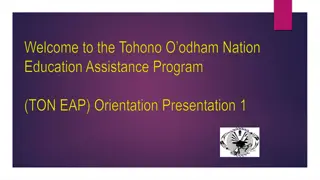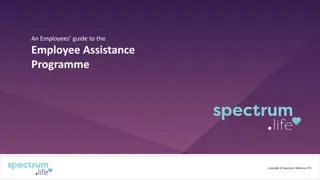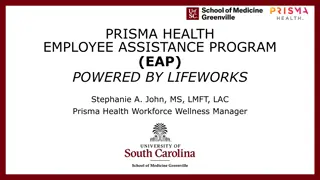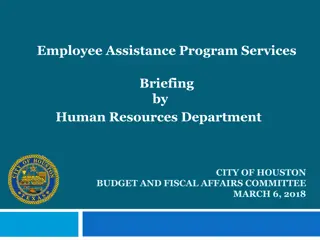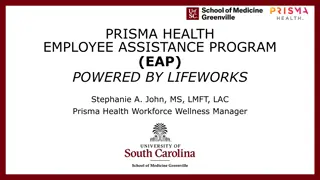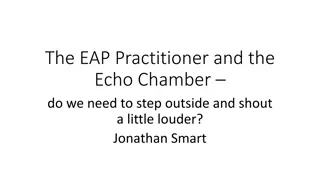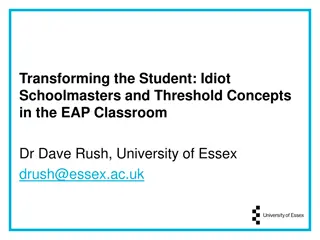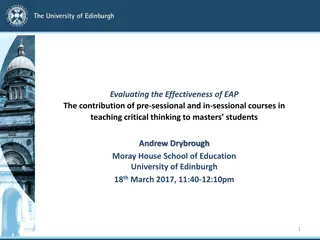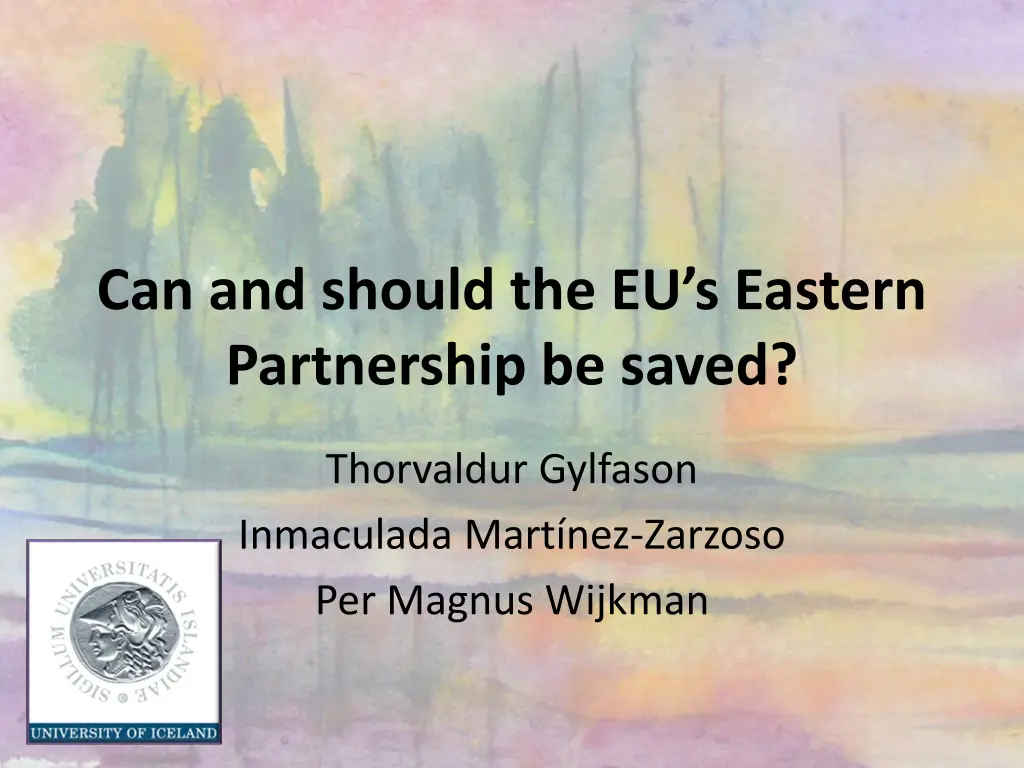
Saving the Eastern Partnership: Challenges and Solutions
Explore the complexities of saving the EU's Eastern Partnership, analyzing its failures, potential benefits, and the importance of deep trade agreements. The article delves into the economic indicators, trade directions, and the gravity model of trade among Eastern Partnership countries.
Download Presentation

Please find below an Image/Link to download the presentation.
The content on the website is provided AS IS for your information and personal use only. It may not be sold, licensed, or shared on other websites without obtaining consent from the author. If you encounter any issues during the download, it is possible that the publisher has removed the file from their server.
You are allowed to download the files provided on this website for personal or commercial use, subject to the condition that they are used lawfully. All files are the property of their respective owners.
The content on the website is provided AS IS for your information and personal use only. It may not be sold, licensed, or shared on other websites without obtaining consent from the author.
E N D
Presentation Transcript
Can and should the EUs Eastern Partnership be saved? Thorvaldur Gylfason Inmaculada Mart nez-Zarzoso Per Magnus Wijkman
Failure at Vilnius Summit Nov 2013 Georgia and Moldova initial DCFTA against Russian opposition BUT Armenia chooses not to initial DCFTA Ukrainian President refuses to sign and to fulfill political conditions for DCFTA Popular demonstrations in Kiev; President flees; Russia annexes Crimea; conflict in Eastern Ukraine Threat of civil war ENP s credibility is at stake
Should the EaP be saved? Yes An FTA with their two major trading blocs (EU, Russia) is EaP s best trade policy Deep trade agreements are significantly more effective than shallow agreements, and are possible with EU but not with Russia DCFTAs between EaPs give significant benefits Thus, EaP countries reap economic gains and EU earns political credibility vis- -vis its EAP partners
Purpose of paper Compare and contrast EaP countries in terms of economic and other performance indicators in view of prerequisites for trade agreements Democracy, free press, functioning of markets, ease of doing business, etc., are conducive to trade and growth and desirable in themselves Also, compare and contrast the EaP countries direction of trade, eastward and westward Present econometric evidence of the effects of trade agreements on trade relations based on estimates of a modern gravity model of trade
From agreements to trade From physics to economics Gravity model explains trade between two countries by their mass (e.g., national output) and distance between the two countries plus other factors, including trade costs, trade agreements, and various other considerations (common border, common language, colonial history, etc.) Can be extended from bilateral trade to trade among many countries
But first: Why did Vilnius Summit fail? Most EaPs seem not well prepared for DCFTA Lack of democracy and free press Poor functioning of market economy Difficult to do business Poor governance, lack of social trust, and pervasive corruption Their credibility as negotiating partners appears uncertain
Former Soviet Republics: Democracy 1991-2012 Baltic States and Russia Six EaP States 10 10 8 8 6 6 4 4 2 2 0 0 -2 -2 Armenia Azerbaijan Belarus Georgia Moldova Ukraine -4 -4 Estonia Latvia Lithuania Russia -6 -6 -8 -8 -10 -10 Source: Polity IV Project.
Former Soviet Republics: Freedom of the press 1993-2012 Baltic States and Russia Six EaP States 100 100 90 90 80 80 70 70 Estonia 60 60 Latvia 50 50 Lithuania Armenia Azerbaijan Belarus Georgia Moldova Ukraine 40 40 Russia 30 30 20 20 10 10 0 0 Source: Freedom House.
Neither democracy nor free press Azerbaijan and Belarus are not democracies by conventional standards, and lack even partly free press Not much different from Russia Ukraine and Armenia are borderline cases, moving in the right direction, yes, but they still have far to go Georgia and Moldova have democracy with partly free press and good prospects
EaPs Ill-functioning market economies Large-scale Privatisation 4.5 4 3.5 3 Small-scale Privatisation 2.5 Competition Policy Armenia 2 1.5 Azerbaijan 1 0.5 Belarus 0 Georgia Ukraina Governance and Enterprise restructuring Moldova Trade and Foreign Exchange Liberalisation Price Liberalisation Source: EBRD.
Former Soviet Republics: Ease of doing business 2005-2013 Baltic States and Russia Six EaP States Armenia Azerbaijan 160 160 Belarus Moldova 140 140 Georgia Ukraine 120 120 Estonia 100 100 Latvia 80 80 Lithuania 60 60 Russia 40 40 20 20 0 0 Source: World Bank.
Former Soviet Republics: Corruption in 1996-2013 Baltic States and Russia Six EaP States 80 80 Armenia Azerbaijan 70 70 Belarus Georgia 60 60 Moldova Ukraine 50 50 40 40 30 30 20 20 Estonia Latvia 10 10 Lithuania Russia 0 0 Source: Transparency International.
Former Soviet Republics: Corruption in 2012 (Business corruption as measured by Transparency, political corruption as measured by Gallup) Transparency Gallup 100 100 90 90 80 80 70 70 60 60 50 50 40 40 30 30 20 20 10 10 0 0 Source: Transparency and Gallup.
Former Soviet Republics: Corruption and trust in 2012 or earlier Corruption Trust 100 100 90 90 80 80 70 70 60 60 50 50 40 40 30 30 20 20 10 10 0 0 Source: Legatum Institute.
Verdict: EaP countries are a mixed bag Georgia and Moldova score highest both on democracy and market economy Belarus and Azerbaijan fall short; they are not WTO members Ukraine and Armenia are intermediate cases, with serious internal and external conflicts, respectively Both resemble Russia in some respects, and seek relations also with the EU Failure at Vilnius was not surprising
Former Soviet Republics: Exports of goods and services 1989-2012 (% of GDP) Baltic States and Russia Six EaP States 100 100 Armenia Azerbaijan 90 90 Belarus Georgia 80 80 Moldova Ukraine 70 70 60 60 50 50 40 40 30 30 20 20 Estonia Latvia 10 10 Lithuania Russia 0 0 Source: World Bank.
Former Soviet Republics: Exports of manufactures 1994-2012 (% of total exports) Baltic States and Russia Six EaP States 100 100 Armenia Azerbaijan Belarus Estonia Latvia 90 90 Lithuania Russia Georgia Moldova Ukraine 80 80 70 70 60 60 50 50 40 40 30 30 20 20 10 10 0 0 Source: World Bank.
Former Soviet Republics: Direction of trade in 2012 (% of total) Belarus Ukraine Rest of world 15% Rest of world 27% EU 29% EU 34% Ukraine 9% Belarus 6% China 7% Russia 47% Russia 22% Turkey 4% Source: European Commission.
Former Soviet Republics: Direction of trade in 2012 (% of total) Georgia Moldova Belarus 5% Rest of world 8% Turkey 5% EU 28% Rest of world 30% Ukraine 16% EU 54% Russia 7% China 7% Russia 12% Azer- baijan 8% Turkey 13% Ukraine 7% Source: European Commission.
Why the gravity model (GM)? Well accepted framework Widely used to estimate trade gains from free trade agreements (FTAs) or deeper forms of integration Easy to tackle a number of issues Endogeneity of the FTA variable in the GM Countries selecting themselves into FTAs Control for zero trade flows Multinomial Poisson New developments Theoretically justified model Anderson & van Wincoop (2003), Feenstra (2004) Sophisticated econometric techniques available Head & Mayer (2015), Baltagi & Egger (2014) Exploiting panel data adds many advantages Flexibility Easy to control for unobservable heterogeneity and multilateral resistance factors (third country effects)
The gravity model: Estimation The Multinomial Poisson involves estimating a Pseudo-Poisson model using the market share (Xij/Xj) as the dependent variable and adding country-specific fixed effects as regressors where Xijtare exports from country i to country j at time t; Y denotes GDP; Lang, Colony, Border and Smctry are dummy variables that take the value of 1 if i and j have a common language, have had a colonial relationship, share a border, or were part of the same country in the past, zero otherwise; FTA is a dummy variable that takes the value of 1 if i and j belong to the same free trade agreement, zero otherwise. Time-invariant country dummies (d) are added for exporters and importers
Estimated once-off trade gain for EaP countries from FTAs EU EaP 293% Russia 0% or less 0% Shallow Deep 6% - 26% 86% Bilateral exports for 34 exporters and 150 importers Exporters are EU countries plus all European, North African, and Middle East countries that are EU neighbors Estimates show effects of shallow vs. deep FTAs on trade on top of gravity considerations (economic mass plus distance, etc.) Source: Gylfason, Mart nez-Zarzoso, and Wijkman (2014).
Can the EaP be saved? Only if ... EU members can agree on a common policy vis- -vis EaP EU and others coordinate policies to exercise both soft power and hard power in region The UN, the Council of Europe, and the OSCE increase international surveillance in the region, especially in Ukraine But there is risk of too little, too late
What the EU can do Encourage speedy implementation of DCFTAs with Georgia and Moldova signed in June Hold internationally supervised referendum in Ukraine to determine scope of DCFTA signed in June by new government in Ukraine Offer to negotiate a DCFTA with Russia Involve Russia in intensified negotiations to resolve regional conflicts prior to DCFTA Transnistria, Nagorno Karabahk, South Ossetia and Abkhasia
Conclusion On the whole, EaP countries lag behind EU countries in terms of several key economic and other performance indictors that are conducive to trade and growth as well as being desirable in themselves E.g., democracy, free press, functioning of markets, ease of doing business, governance, interpersonal trust Stronger performance in these areas will encourage trade and growth

